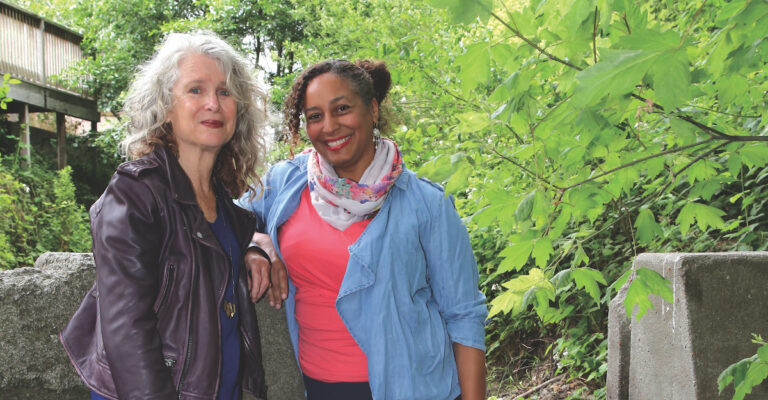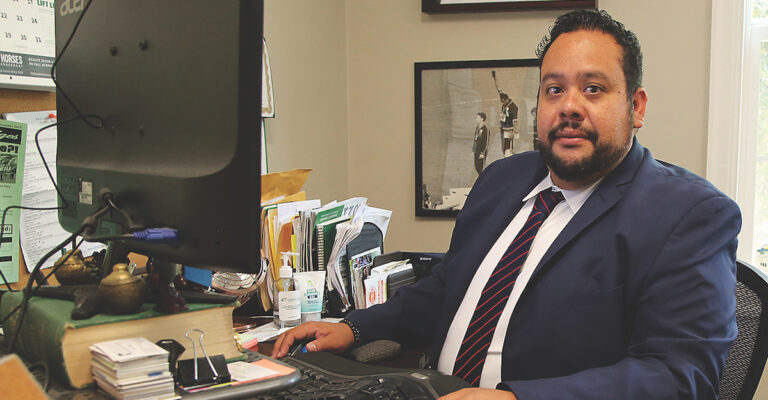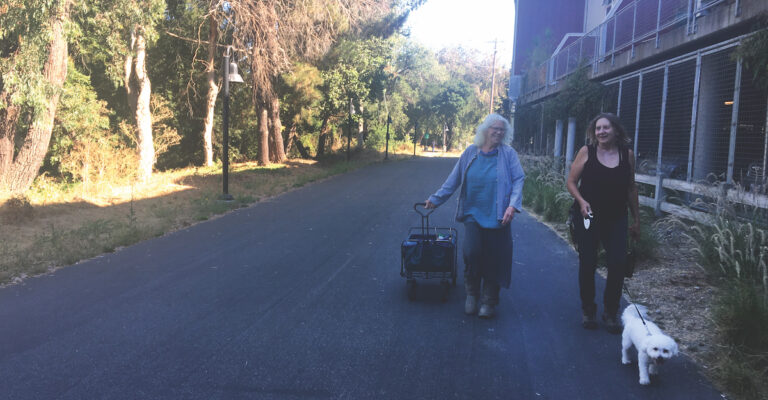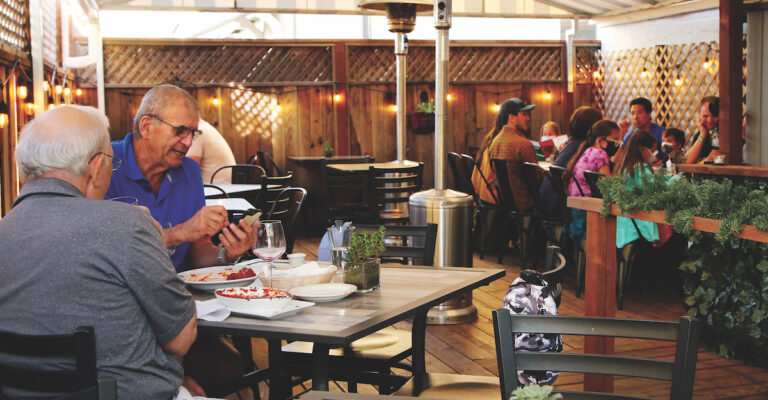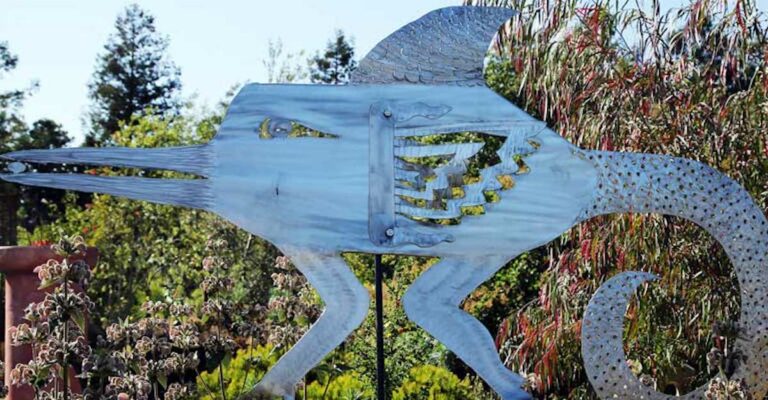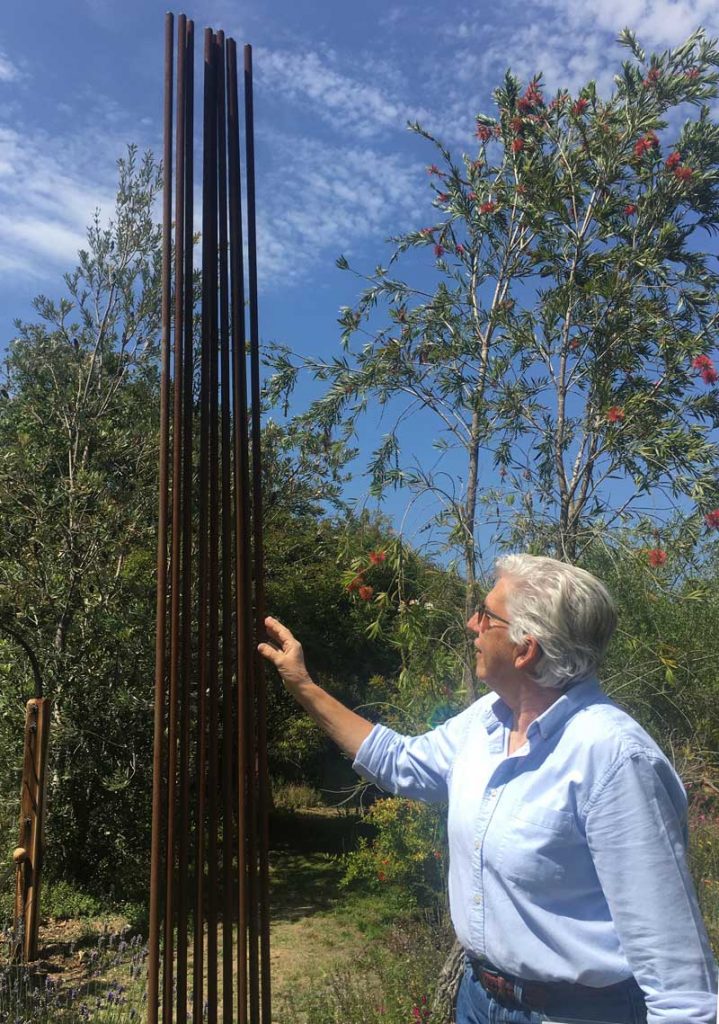Everywhere I looked over the last year, there was a Zoom reading, a Zoom workshop, an online magazine, an upcoming webinar—all devoted to poetry. Was it my imagination that there was a lot more poetry action going on during the pandemic?
Not according to Jeevika Verma of NPR’s Morning Edition, who noted on the show in April that “overall visits from readers to the website poets.org went up 30 percent during the pandemic.” Maya Angelou’s famous poem “Still I Rise” alone received roughly 30 percent more visits on the Poetry Foundation’s website in 2020 than the year before.
Poetry has famously flourished in times of crisis—including pandemics past—thanks to poets and writers galvanized by suffering and confusion, from Boccacio’s Decameron in the 14th century to Jack London’s The Scarlet Plague in 1912 to Camus’ 1947 The Plague to Gabriel Garcia Marquez’s Love in the Time of Cholera in 1985. Certainly the electrifying effect of Amanda Gorman’s reading at the Presidential Inauguration on Jan. 20 is a case in point. Within hours of delivering her poem, the young poet went viral, and in a single day Gorman attracted more than two million Instagram followers, Buzzfeed reported. Her poetry struck a collective nerve in a moment of national turmoil.
“Poetry is an art form that has always been a resource in times of crisis,” says Jennifer Benka, president of the Academy of American Poets.
That’s proven true once again in the pandemic. Virtual poetry workshops sprang up in response to the physical and emotional confinement of Covid-19. The Hope Storytelling Project was one successful movement, founded during the early quarantine by two Harvard students who said they were inspired by the need “to share the therapeutic power of poetry” and “create a sense of solace and community.”
Vermont-based poet James Crews, co-host of an online webinar I’ve been attending, says that one reason poetry has provided solace this year is because it’s a powerful medium for working through change.
“A lot of poems are read during funerals, weddings, graduations, and huge transitions in our lives,” he says. “And I feel that we’re all turning to poetry as a way of capturing and naming this huge transition that we’re all going through together right now.” Former U.S. Poet Laureate Billy Collins put it like this: “The virus is slowing us down to the speed of poetry.”
I was among those turning to reading, writing, studying, and hearing poetry during the past year’s lockdown. I studied style and technique with Ellen Bass’ Living Room Craft Talks. I submitted my beginning poems to Dion O’Reilly’s craft workshop critiques, and listened to readings from around the country with the Poetry of Resilience series hosted by Crews and Danusha Lameris, whose Bonfire Opera just won the Northern California Book Award in Poetry.
So I asked a cross-section of Santa Cruz and Bay Area practitioners: Was poetry truly having a moment? Has the Zoom phenomenon expanded our access to it? And how has our virtual year changed the nature of our bond with spoken poetry? Here’s what they told me.
Kim Addonizio
Author of ‘Mortal Trash’
“Yes, there’s an upswell of poetry, I think so absolutely. Poetry is always the thing people reach for in time of struggle. A way to respond, to process some large event. Death, birth, war. It’s always deepened and expanded our awareness of an occasion. So it makes total sense that people would now reach for the solace that poetry can provide. For those of us lucky enough to work from home, there was time during Covid to write, at least time for contemplation.
This year, I lost a lot of teaching and conference gigs, but it inspired me to switch over to Zoom. I discovered I love teaching on Zoom. I have students in Ireland, Scotland—all over the world. It’s a real opportunity for more people to come together—that’s not possible with live readings.
There are more organized readings, also more online ways to read and hear poetry. I can see people in their little squares on the screen. It’s a wonderful way to hear people read. Just listen. With the pandemic shutdown, we had to invent spaces to meet. I got my former students and we all got together for an online reading. Lots of Zoom gatherings have enabled poets to connect. It’s broadened the community. The new and emerging poets can have a platform they wouldn’t otherwise have. I’m currently on a Zoom book tour with my new book, Now We’re Getting Somewhere. I’m staying with teaching on Zoom.”
Danusha Lameris
Author of ‘Bonfire Opera’; Poetry of Resilience webinar host
“I found poetry has truly been a lifeline to me. It has provided me with community, humor, creativity, shared grief, and an intellectual passion, all in one. I have never been more grateful for poetry than I’ve been this past year. Poetry was already experiencing an upswell, the pandemic cloistering gave it added momentum. Plus, it’s easy. The technology made it possible to expand poetry reading and writing.
People need connection. Poetry is all about connection and poets are especially good at communicating—it’s a handle we can grasp. It deals in metaphor, which is already a connection. People want to tell their story, and they want to hear each other’s. Everybody wants to become part of the secret life of poets. People tell me they wrote poems in high school, but then they stopped. This was the perfect moment for them to start again. And we were moving toward more online classes, more webinars. We offered small classes on Zoom all through the pandemic. It’s an open medium; more and more voices are being heard. The Amanda Gorman effect, especially here. It’s an exciting moment for poetry. Fragmentation increases richness; conflict breeds creativity. American poetry right now is exciting.”
Dion O’Reilly
Author of ‘Ghost Dogs’; co-founder of the Hive Collective
“I had to cancel my entire book tour for Ghost Dogs, which was released in February 2020. I did get the opportunity to read in webinars and Zoom readings, which was perhaps not quite as fun, although it could be argued that more people heard my work. There is a certain intimacy to live readings I miss. You can feel the room responding. Still, as time went on, I began to feel the digital audience more. I learned to make it fun, to appreciate the opportunity.
In lockdown, people were seeking simple tools to talk about complex feelings. Shelter in place brought me new students, people hungry for connection and clarity. I loved seeing my students connect, both with their own ideas, with each other, and with the poetry universe.
They want to talk about the things that matter, unfiltered. In poetry writing and workshops, there is a huge feeling of relief. I kept writing during the long shelter in place. I must admit, it was super hard. Harder than usual. The plague, the politics, the wildfires and hurricanes—it was all terrifying, difficult to clarify or interrogate. When I managed to express myself, the rewards were greater for having worked harder.
Texting has also inoculated how poetry is done—the compression of texts, shorter poems, things that can fit onto Instagram. We live in brevity as poets. Things are so complex now, poetry is a place where things can be ambivalent, where there doesn’t have to be either black or white. We can live with complexity.”
David Sullivan
Poet Laureate, Santa Cruz County
“I’ve realized how much outside stimulus is part and parcel of my creative process. My students, visits to museums, traveling, hugs and physical contact—they’re all part of the writing. Without them I felt bereft, empty, hollowed out. And I realized what a privileged life I lead. The ability to attend readings in far-flung places, to get participants from other countries, was remarkable. I attended poetry workshops online, including a week-long Dodge Poetry Festival virtual series. We’d receive a prompt each morning, and post what we wrote later in the day. And a poet friend from Nevada, Ann Kenniston, arranged a week-long session with five poet friends where we’d Zoom each morning, share a poem we’d written the previous day, and then give positive, generative feedback. Now with the Agents of Change project, I’ve asked people to send up to two pieces of art, which we post on our website [santacruzagentsofchange.wordpress.com], and then poets can write up to two poems about them. Hopefully we’ll have a gallery show and reading next Spring to celebrate what this amazing community comes up with.”
Farnaz Fatemi
Co-founder of the Hive Poetry Collective
“So much of the world—climate health, public health, any old future at all—is marked with uncertainty. Poetry has always been a place to turn to explore the unknown and help people maybe make some sense of it. That’s one of the reasons I return to it as a writer and a reader.
I think more people have consciously sought out access to poetry in the last few years, and during the shutdown we have taken advantage of access to readings, workshops for a range of writers (from novice to experienced) and affirmation that we are not alone in our appreciation for what poetry provides. Yes, Zoom and other Internet-based poetry programs absolutely opened up access. I was able to participate in workshops and craft classes that I never would have otherwise over the last 18 months. What Zoom did was brought poetry into peoples’ kitchens and living spaces, which in some ways is more intimate and is also a return to the deep origins of poetry itself.”
Stephen Kessler
Author, ‘Garage Elegies’; ‘Last Call’
“The Bay Area was a poetry mecca from the late 1940s, early 50s, and the San Francisco Renaissance—of which Kenneth Rexroth was the prime mover with his literary salons, incubator of what became the Beat movement; radio programs on KPFA; live readings in galleries, cafes, and jazz clubs with musical improvisation accompaniment; newspapers and book publishing, with Lawrence Ferlinghetti’s City Lights Books (and the 1956 “Howl” obscenity trial) in the vanguard. As a geographic setting, Berkeley was also friendly to poets, but I think the epicenter was North Beach with Ferlinghetti playing the role of godfather.
As far as Zoom goes, there was a certain intimacy in inviting the audience into my office, and I was glad to have far-flung friends be able to attend from other parts of the country. But as a medium for poetry, I feel the screen, whether for text or performance, is an inferior medium to the printed page or in-person voicing because, as Marshall McLuhan once said, the medium is the message. The energy in the room with a live audience creates a completely different—and far more interesting—dynamic, as far as I’m concerned.
During the pandemic, I wrote far less in public spaces, cafes, concert halls, restaurants, and parks, which I find stimulating and inspiring in their unpredictable distractions and sensory surprises. But otherwise, staying at home alone is normal for me and only made me pay closer attention to my immediate domestic surroundings for inspiration.”
Gary Young
Poet, printer, director of UCSC Cowell Press
“I think the current abundance of poetry is a manifestation of what I think of as the 9/11 Syndrome. After the towers fell, it seemed that everyone was reading poetry. It happens every time there’s some catastrophe, natural disaster, or human-wrought bloodbath. Most people don’t habitually read poetry, but they turn to it whenever they need solace.
I have participated in several readings on Zoom since the pandemic struck, and I’ve taught three classes every quarter on Zoom as well, so I’ve become far more familiar with the platform than I might have wished. Whether teaching or giving a poetry reading, anything done on Zoom feels like kissing someone with your mask on. It’s always a simulacrum. Because most Zoom readings mute the audience, it’s impossible to know if the audience is bored, thrilled, or amused.
The pandemic was different in that in addition to people reading poems for emotional comfort, they started writing poems as well. The proliferation of Zoom readings gave us easy and open venues, and people took advantage of that. I think another reason for the popularity of Zoom readings is their informality—looking at the audience and feeling like one in a crowd was very satisfying after our prolonged lock down. Writing poetry has been an activity that’s united us in our fight against loneliness and despair.”
Wilma Marcus Chandler
Author ‘The Night Bridge’; founder, Celebration of the Muse
“I agree that there’s more interest in poetry writing and craft since the pandemic closure. New workshops keep popping up all the time. One of the gifts of the hideous pandemic is time. And with time, if you have a calling as a writer, you honor that, you explore that. You have to be daring. I think the writing is a gift we give each other, sharing each other.
I’ve had contact with incredible writers. With Diane Grunes and Donna Gorman, I started the Celebration of the Muse in 1982. The National Festival of Women’s Theater was in town and there was an empty slot for women’s poetry in the Santa Cruz area. Claire Braz-Valentine and lots of others were involved, and it just kept going. Then Hummingbird Press got started. It started to support manuscript development, and to publish a book a year. I’m happy to be one of them, it’s a wonderful group. There are so many poetry groups and writing groups here now. I’m more and more aware of magazines online and readings all over the country. I can be on Zoom with so many writers everywhere. The Porter Library Readings, Zoom Forward. We are so gifted in this community of writers.”
Catherine Segurson
Founder, Catamaran Literary Reader and Poetry Prize
“We saw an increase in poetry submissions that addressed some of the emotional issues around quarantine, such as loneliness, increased connections with nature, dealing with distance and silence, the longing for family and social gatherings, and of course death. As always, poets take a large emotion and condense it, and with the pandemic they did have a grand subject matter to use.
I believe poetry is an essential part of a literary magazine. I also felt that poetry should be given a two-page spread with fine art, and that visual art and poetry often inform each other.
While we missed the in-person interaction during the pandemic at our year-round poetry courses, First Friday Lit Chats, and poetry workshops at our conference, because poetry is so essential we found a way to pivot to online readings, workshops and even conference talks virtually.”
Erin Redfern
Former Editor of ‘Caesura’ Magazine, Poetry Center San Jose
“I found that the quarantine, at first, created a lovely spaciousness, but then people found their way to poetry and there was a rush of readings, online magazines, workshops, classes. San Jose has a really lively arts culture that doesn’t get much press. We have all of the action of the Bay Area with none of the attitude. The South Bay is a younger culture; a lot of it is performance poetry and very downtown-based. We’ve got museums, San Jose State, the Poetry Center San Jose, all these things playing together. Plus Third Thursday readings, Well-Read, all live. This year, most of that has shifted online. We lost our public cultural spaces during the pandemic, but with Zoom we can find each other.
Poetry nationally is academic poetry, attached to universities and MFA programs. That’s the poetry we see and hear about, and we need money to access that. I see the pandemic and Zoom culture as democratizing poetry. So I don’t think there’s necessarily more of it, it’s just more accessible. Going online has opened highways of access. With Zoom classes, there’s lots more diversity. Diversity has blossomed.
In my career, after getting a PhD I went in the direction of writing essays on poetry. And then I started up a few classes. I have a lot of teaching experience, and now I don’t have to charge as much as I would if I had to rent a space. I can attract more people to my class now that I have little or no overhead. So we can make classes real affordable.
With the pandemic, it became shockingly apparent that we have no ground under our feet. We had more time to write, but also, as Frost said, poetry was ‘a stay against confusion.’ Poetry puts words to how I feel—it’s like medicine. It helps us think and process. No one is using language more consciously than poets. We’re hungry for it.”





